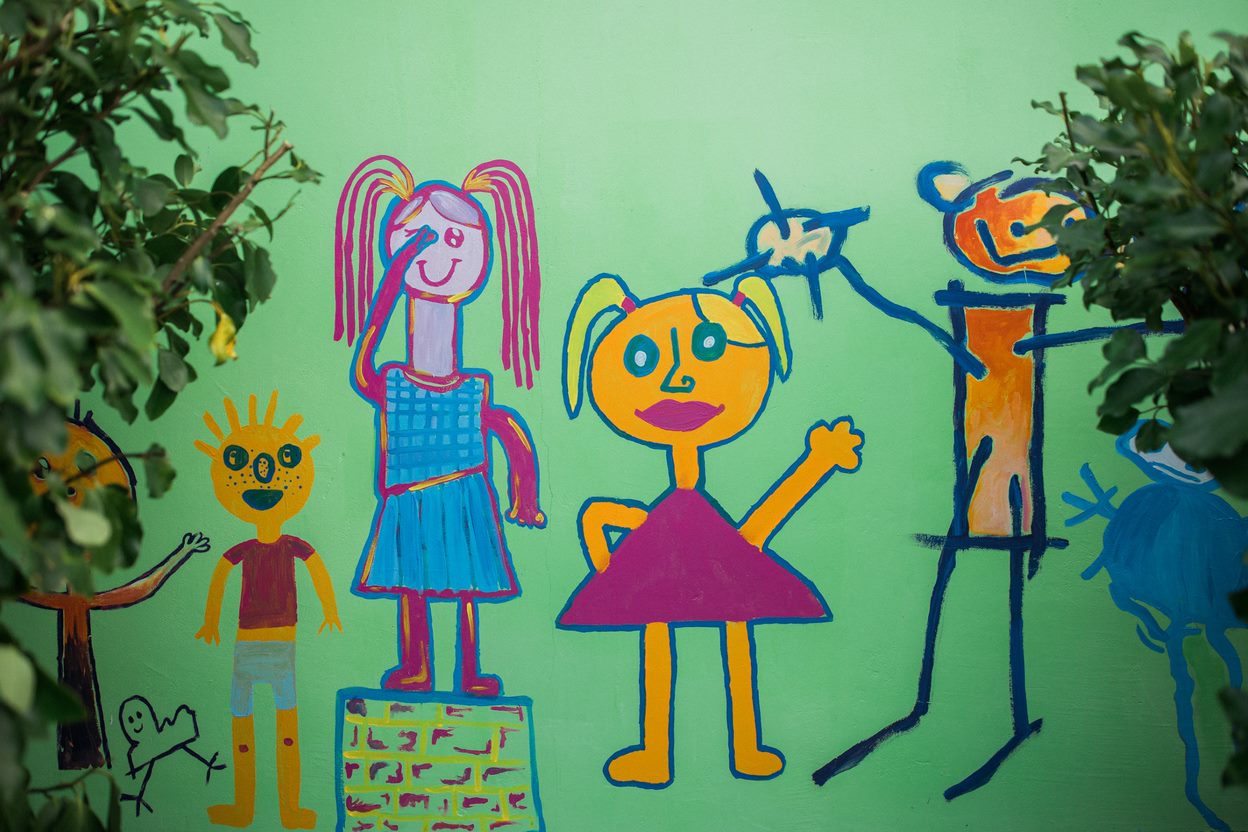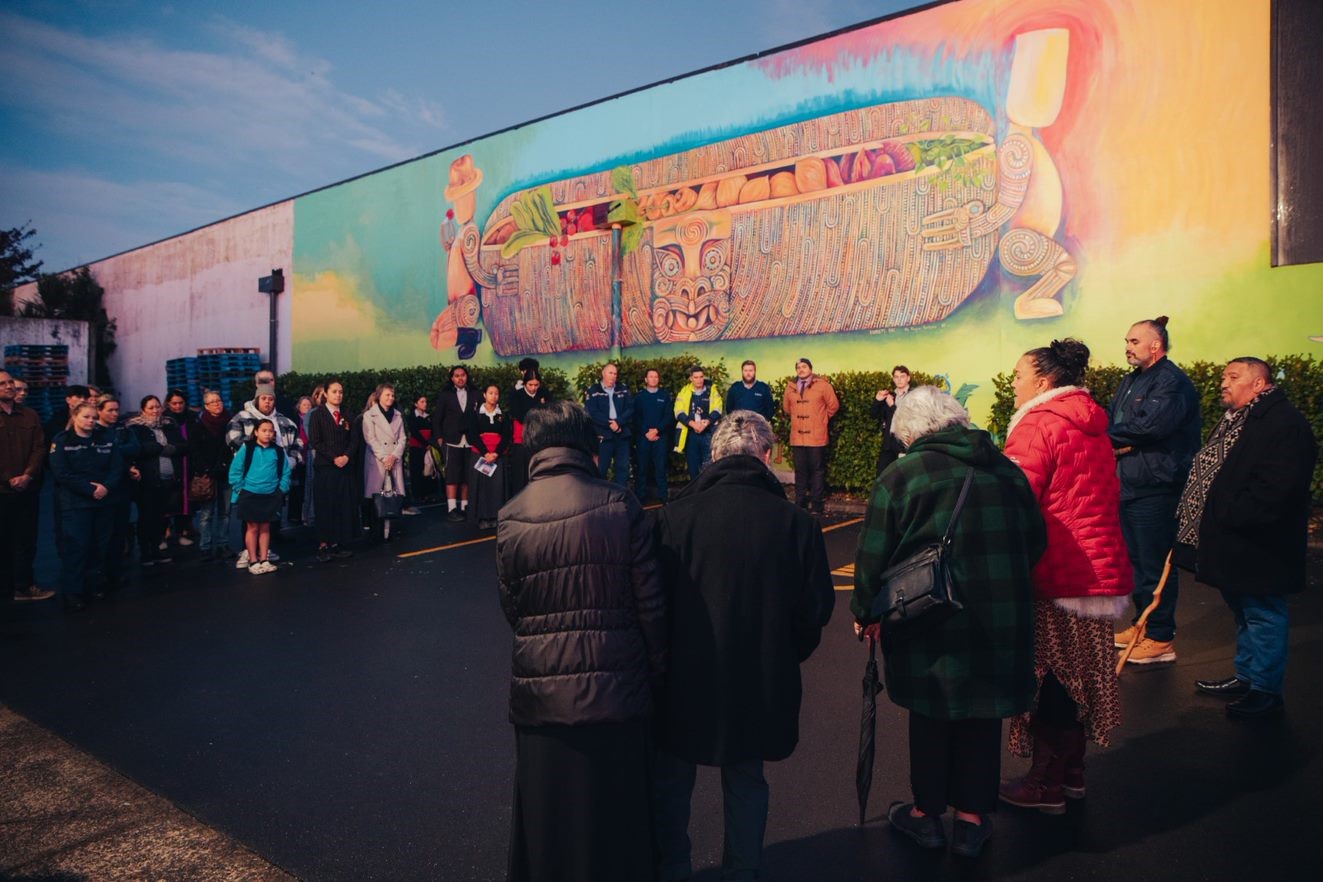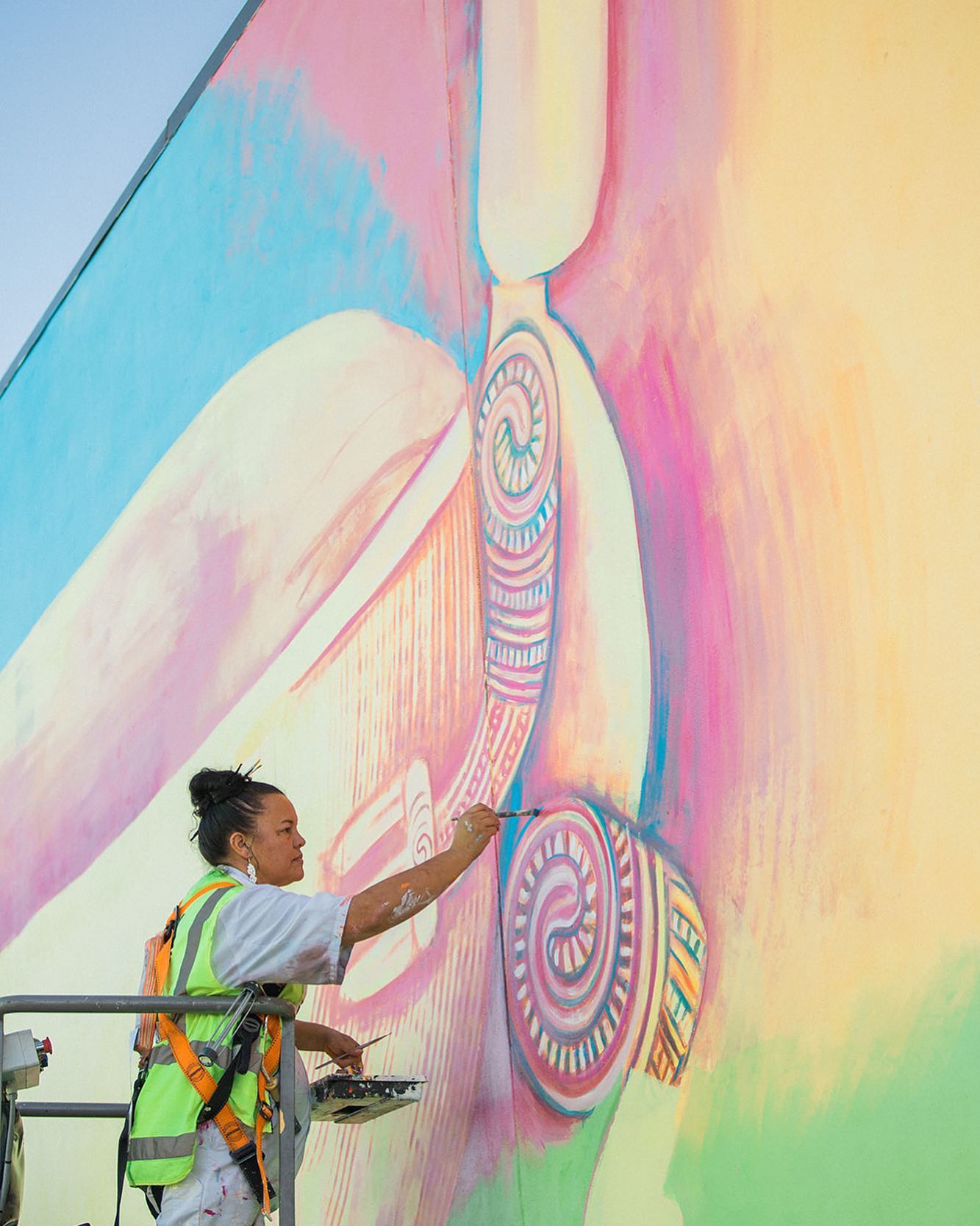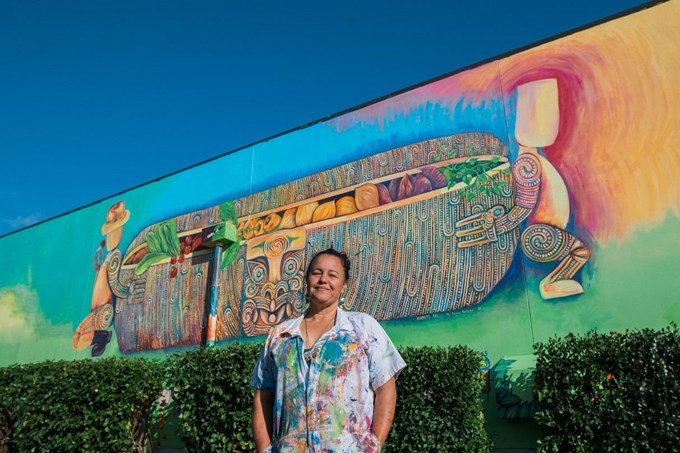Just as Pukekohe Library is a paataka korero – a food bowl for the mind - artist Regan Balzer’s mural on the side of Franklin: The Centre, is a kumete – a food bowl.
Now blessed by mana whenua, the mural is the latest added to the Pukekohe townscape, the artist helped by Pukekohe High School students.
Balzer was committed to staying close to the original kumete design, with the food bowl representing the area’s fertile soil, waterways and plentiful foods.
The idea also aligns to the library and “Te Kai a te Rangatira” – the food of the chief is korero – as a place where people gather to share knowledge, consider, discuss and learn.
It also acknowledges our connection with meeting for shared meals, and how enriching and supportive togetherness and shared conversation are.

Balzer told Pukekohe High School art teacher Catherine Tamihere, who co-ordinated the students involved, she hoped people could see themselves, because the work was created for the community, reflecting on the area’s resources as a path to health and well-being.
Hidden in it are playful healthy children. Tamihere says her students, using pictures sent in by local kids, added them peeping out from behind a hedge at the bottom of the work.
“The idea was to include our kids by having them paint the portraits, so that when you look, these little ones are looking back at you. It’s a way of honouring the children in Pukekohe Cemetery’s unmarked graves, children in the gardens, and yet to come.”
Tamihere is behind the murals beautifying the town, and even captured the attention of the producer of House Hunters International, who has expressed an interest in filming for an episode about a family who moved from Michigan to Pukekohe.
The mural initiative is a bid by Eke Panuku to enhance the town through art as part of its Unlock Pukekohe placemaking project while also recognising community identity and shaping a narrative that celebrates the area's history, especially around Māori culture.
“The kindness of Pukekohe was next level throughout the process of the mural,” Tamihere says. “Most nights we worked until midnight. One gentleman brought us hot chicken, we got snacks and high fives. It feels like we are working towards our goal of making Pukekohe the most Aroha town in Aotearoa.”

Balzer’s unique style combines cultural touchstones with layers of colour.
She has exhibited around the country and overseas, particularly in Italy, America, Australia, Rarotonga and Tahiti, having graduated with honours as a Masters in Māori Visual Arts at Te Pūtahi-ā-Toi, Massey University.
From Rotorua, her work is influenced by the area’s volcanic thermal features and the colours generated by natural minerals.
When young, she would go with her grandmother to her work as a Māori Arts and Crafts Institute guide. On the tour she would listen to her talk about the history of the people and the land, the carvings, greenstone pendants and garments she saw.
“It made me appreciate how connected the artworks were with the people and their stories, and how important art is a receptacle of knowledge and stories,” she told the artedit.com.au website.
She also enjoys exploring the relationships people have with treasured objects. “I use designs from Māori art and life, and an element of intuition that uses strong, contrasting colour, to bring layers of a story to life.”
“My husband lived in Pukekohe when he was young and remembers the gardens, school and family life, so it was special to be able to paint a mural for this community”.

Franklin Local Board chair Angela Fulljames says the mural and its messages are powerful.
“We need to encourage and acknowledge our history, some of it less perfect than we might like. That is a path forward that is both honest and constructive.”
She says Tamihere’s vision of using art to change the narrative of the area’s history of racism toward Māori is especially valuable because of being confronting.
“There are people still directly affected. These are issues that hit their families, it’s very recent history. My hope is that we can all see the murals as part of the healing process.”
Artist Martin Langdon’s contribution to the series, Too taatou Kaainga, too tatou Hiitori was painted in West Street with Te Rama O Matahuaanga as its driving concept, a reference to the place of seen and memorialised history.
It draws on symbols from the immediate environment, the Seddon Memorial light, the Judas tree and other elements, while using what has become his signature font to provide prompts to unseen histories as we look back with new light to provide a way forward.
Partly using Creative Communities funding allocated by the board, Jimmy James Kouratoras painted the mural behind the town square, attracting One News, saying his work was like a waharoa – gateway, for conversation.
“It's about changing the narrative, acknowledging it, but changing it for the youth and bringing a new colour palette to their story."

Tamihere told One News she hoped the murals would become an educational resource for the community.
"The way forward is to educate everyone. With New Zealand history coming into the curriculum, this is the perfect time to be able to use the murals, so that it becomes sort of like a walking tour of our own history.”
At the blessing for Blazer’s mural, Tamihere said the murals were the third part of a response to the book No Māori Allowed, the first being having author Robert Bartholomew speak locally, and the second the Hikoi for Harmony.
“All three of these responses came out of talking with our students and others. It was clear the impact of this history is still being felt, and that divisive elements are still present.
“There was a lack of awareness about the stories detailed in No Māori Allowed, and we felt there was a need to respond, but also an opportunity to do it creatively, to help bring people together.
“The creation of beautiful art that depicts Te Ao Maori, where all things are connected and inter-related, can help us heal and further break a taboo that has sat over our town, for only by acknowledging the past, can we move into the future.”




